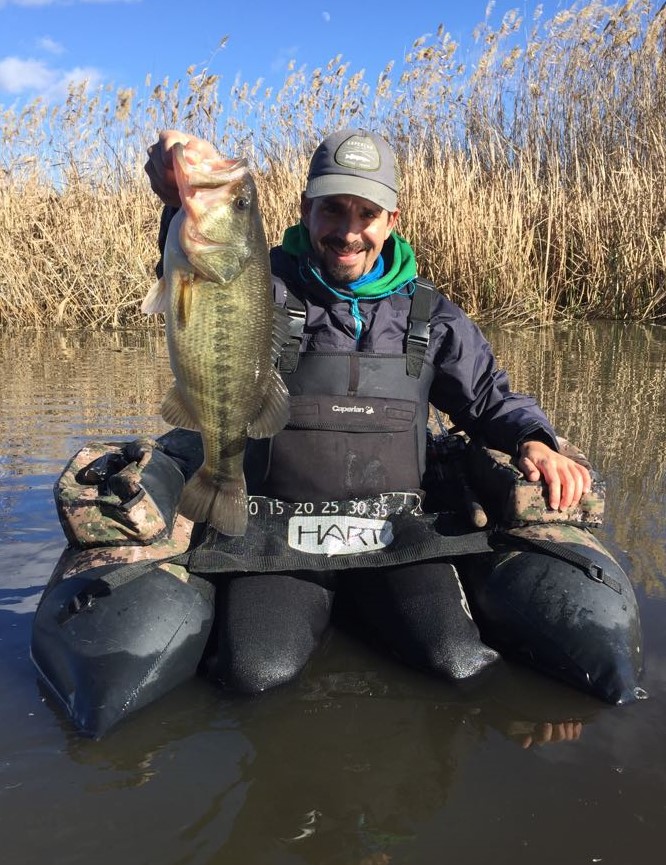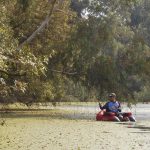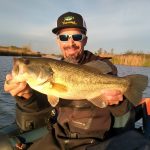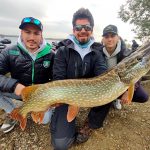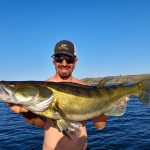Despite the diversity of environments that can be found along the sections of the Guadiana River and its tributaries mentioned in the tables of Guadiana, I’ve decided to choose theses Guadiana’s top lures. All of them will be productive in multiple circumstances, but once again we will have to adapt to them. As black bass is the most abundant predator, it will be the main target of these lures. However, pike and iberian barbel will not hesitate to attack them either if we put them within their reach.
Frog
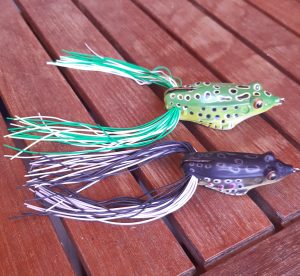
There are several species of frogs that naturally inhabit these ecosystems and are part of the diet of these predators. Beyond the similarity that lures may have with the frogs themselves, it is their versatility that is key. Their ability to work in areas where it would be impossible to fish with other lures is the main reason for choosing them. We can use both vinyl frogs and “rubber” frogs or other floating material. I preffer “hollow” frogs due to their resistance that will offer us the best results most of the time.
It’s very important that we use them properly. It doesn’t make much sense to throw a frog in the middle of the pond, although sometimes we can have catches that way too. Usually they work better the thicker the cover is, since many times the fish are lying down or just resting, and this lure passing over them causes the bites.
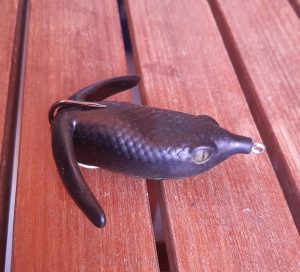
It is also important that we master the “skipping” casting technique. Only this way we will be able to accede to the interior of submerged trees suitably, or to introduce the lure under the vegetation of bank (brambles, trees or bushes), to achieve that it is posed where the fish are many times. Fishing with them among water lilies is also an exciting fishing… Sometimes we have big extensions of water lilies and we do not know very well which one to cast… The experience will help us to select the casts according to the irregularities of the cover or the bottom.
As far as colours are concerned, the black ones work very well at dawn and at dusk, and for the rest of the time I usually use more natural colours depending on the level of turbidity of the waters.
Jig. Guadiana’s top lures
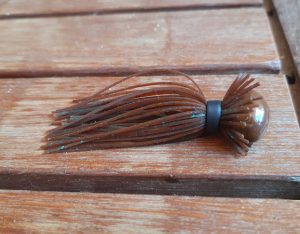
If I could only bring one lure to fish in the river, this would be the jig, for me one of the best Guadiana’s top lures. To fish in an environment with so much coverage the ideal is to use flipping jigs since football jigs penetrate worse. Another very interesting option is to use punch weights, which allow us to penetrate it even better.
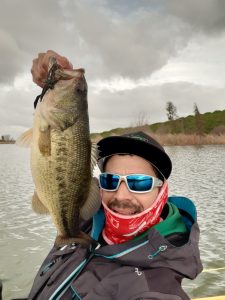
In terms of size, half an ounce is the most versatile, but if the pond we are going to fish in has very thick cover, we will have to go up to 3/4 or even 1 ounce. It is very important, as with the frogs, to use a powerful rod (heavy at least) and a good braid since many times we will need to literally “pull” the fish out of the cover.
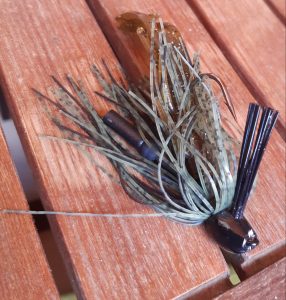
As for the type of trailer, the river waters are usually murky, so I would go for vinyl that emits quite a bit of vibration. Mainly crawfish, although we can also use creatures, grubs or even fish shaped vinyls. There are mythical colors like PB&J or black and blue, but the ideal is to imitate the color of the crawfish or the prey fish that the match the hatch fish are eating. If the water is turbid we will try to give it a solid or striking touch, and if it is clearer a more natural or translucent touch.
Spinnerbait
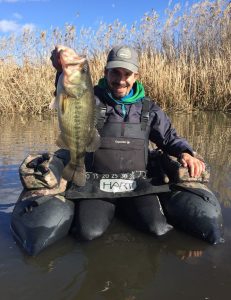
If we are not very clear about where the fish are located, and the river table we are going to fish is quite open, the spinnerbait is going to help us a lot to locate the fish. Nowadays fishes feed both on bleak and crawfish so I decided to select 2 lures to fish the covers and other 2 to fish in more open areas.
The big advantage of the spinner is that we can cover a lot of water in a short time and get an idea of the location of the fish. Are they near the shores? Near the underwater vegetation? Near fallen trees in the middle of the river? Once we have bites, we can decide whether to continue fishing with spinner or to change to another lure more suitable for that situation.
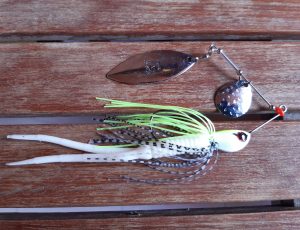
Besides, not having treble hooks allows us to fish in moderately entangled areas. Also the vibration will help the fish to locate the lure, especially in turbid waters. The white / chartreuse colour is very versatile, but it will be convenient to make adjustments according to the color of the water, as always. I usually use half an ounce and spinner with “little body” so they can better penetrate between the gaps in the cover.
Hard swimbait. Guadiana’s top lures
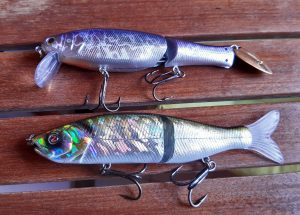
Finally, and if we focus on the search for big bass or pike, the hard swimbait is a very good option. We can’t forget its limitations in environments with a lot of coverage and hooks… But if the board is full of bleak we should give it a try. Casts parallel to submerged trees, vegetation or any other type of cover will give us the best results, always working at the right speed.
There are some models that have interchangeable tails, which we can attach according to the color of the water. In some models we can even replace the rubber tail with a paddle. Although we can use it all year round, it is a lure that works especially well in spring, but also during autumn. In my opinion, it is more productive to use it on tables with not very turbid waters and natural colours… However, on certain days, and especially if we’re looking for pike, bright colours can also bring us great joy.

